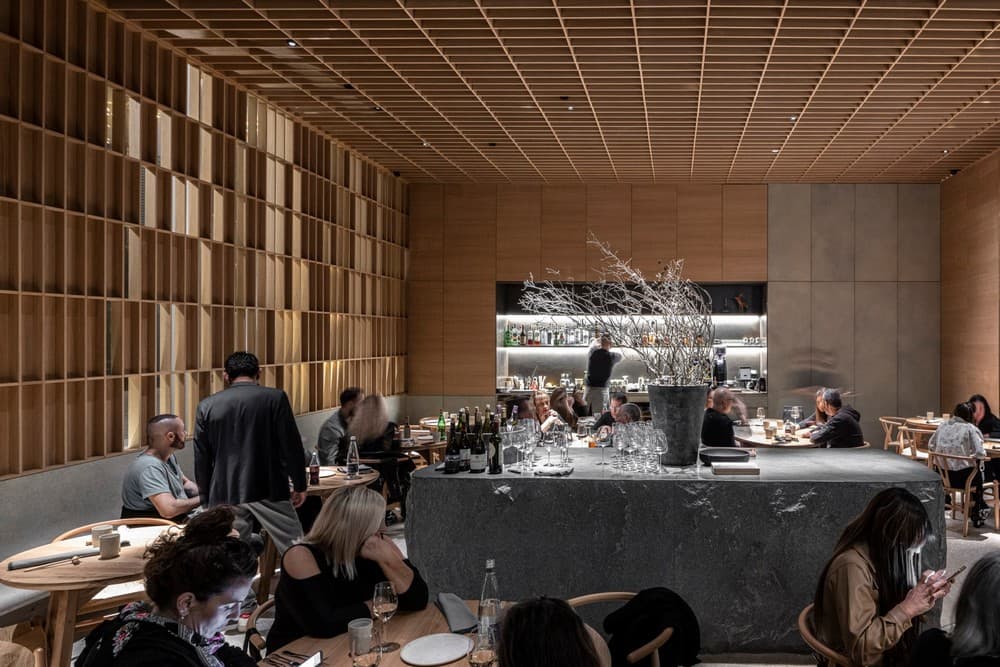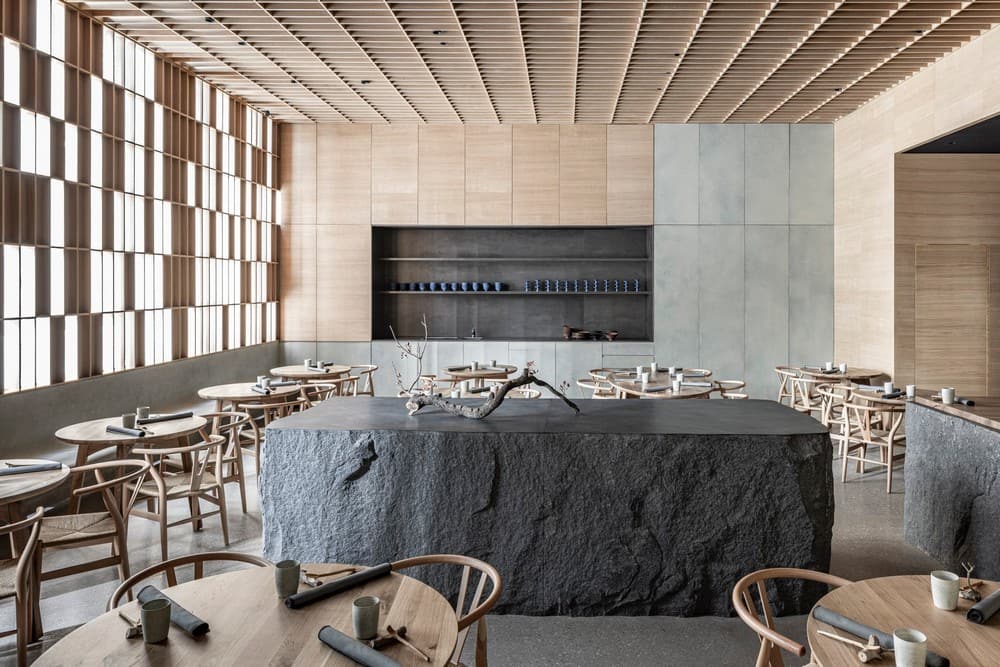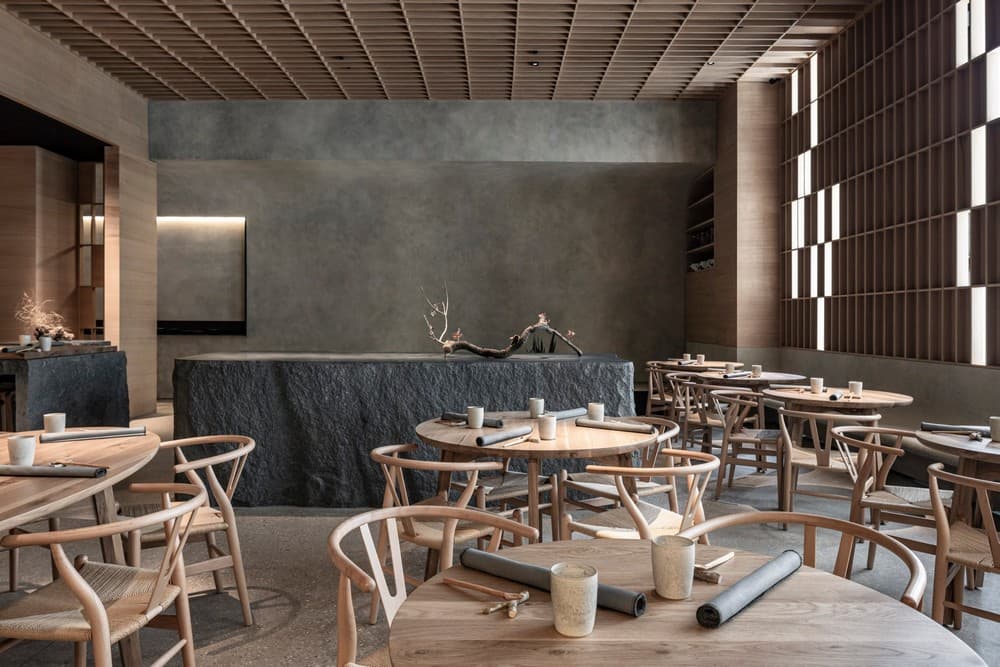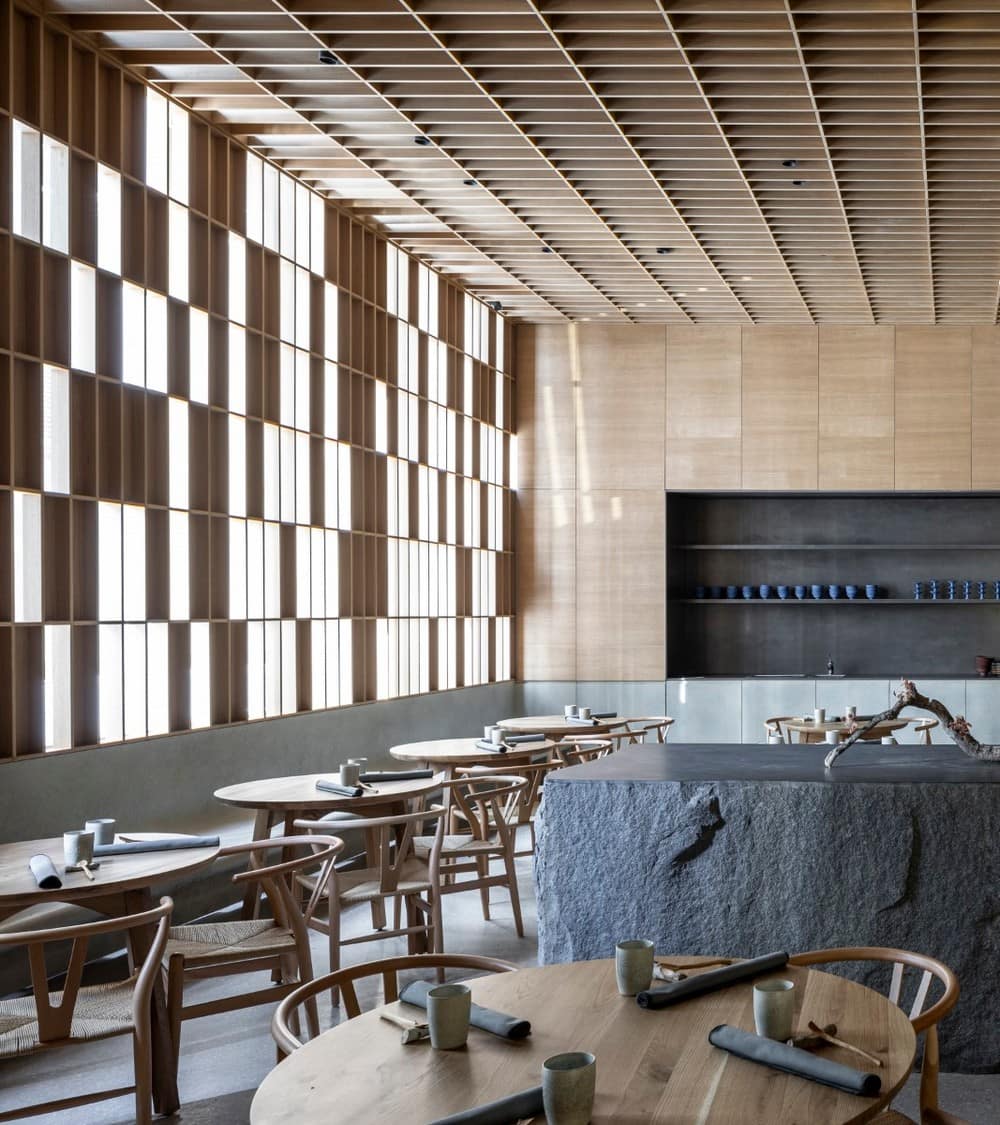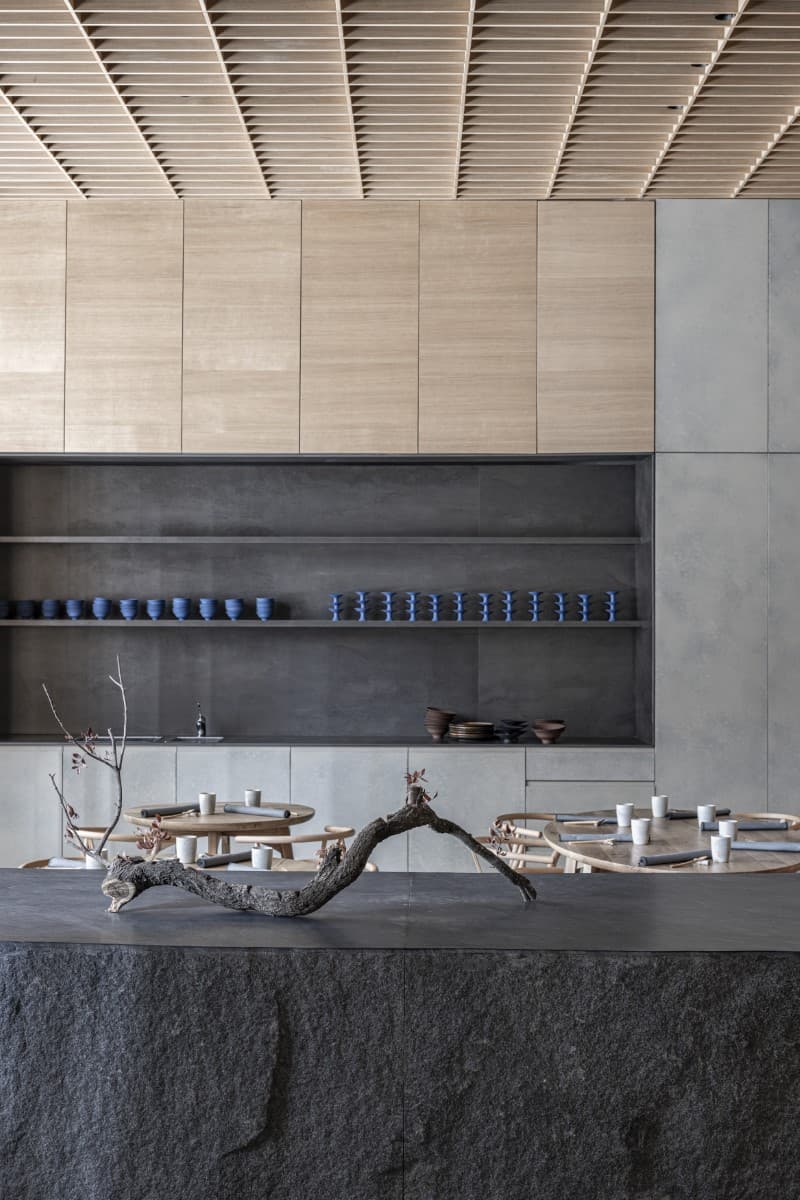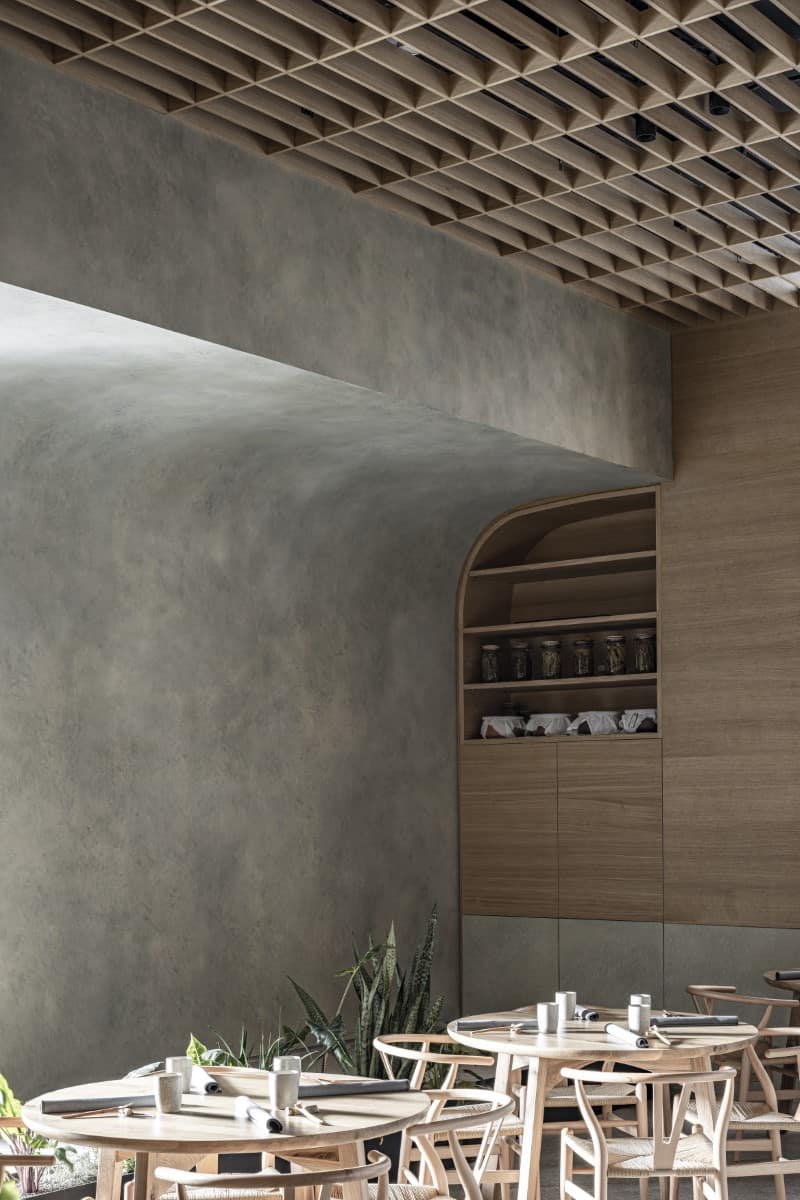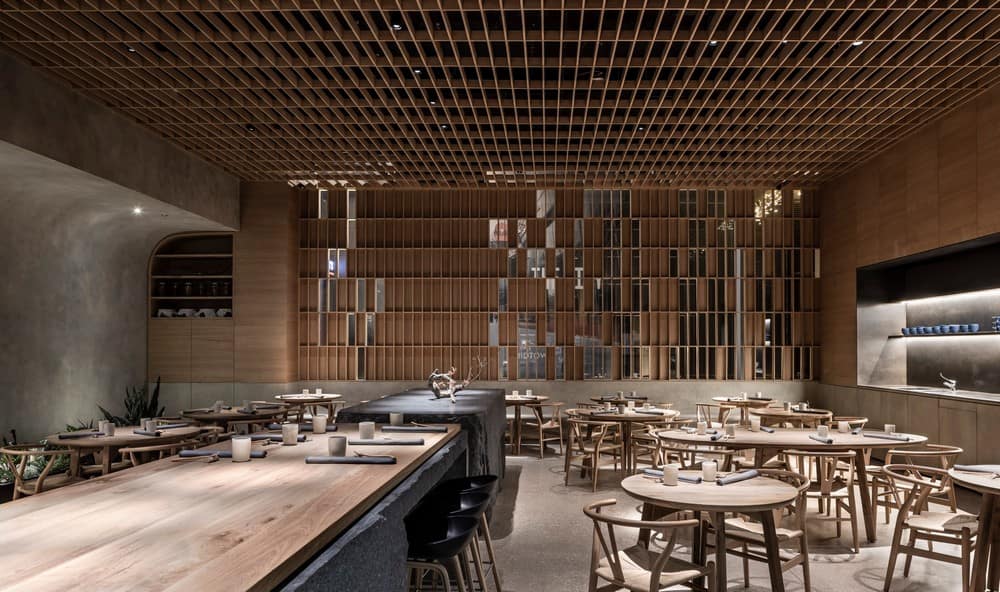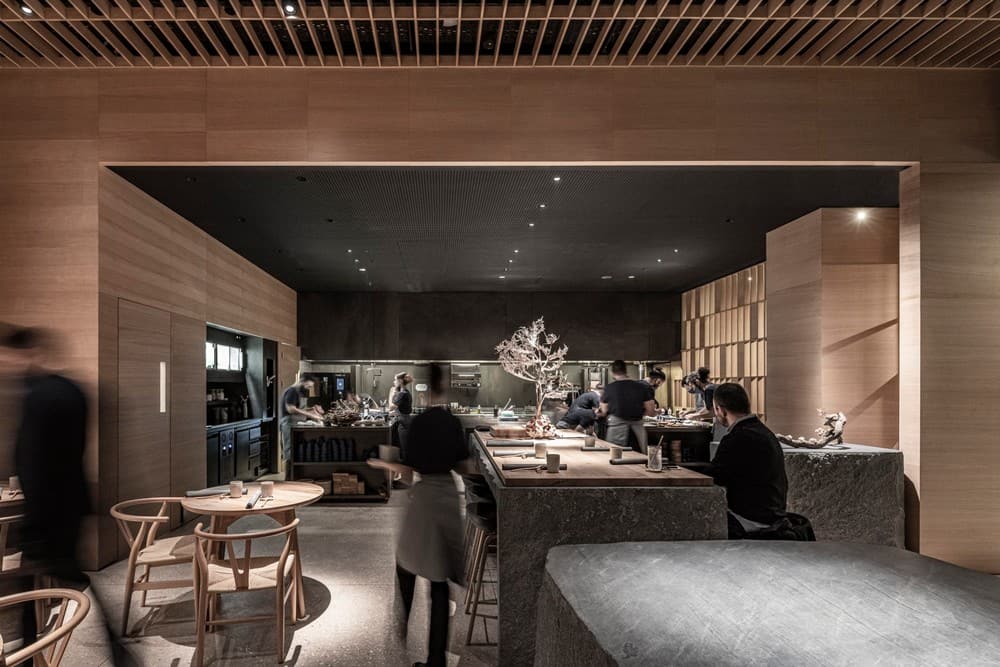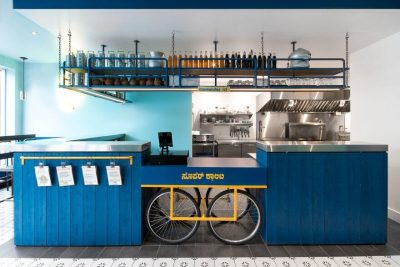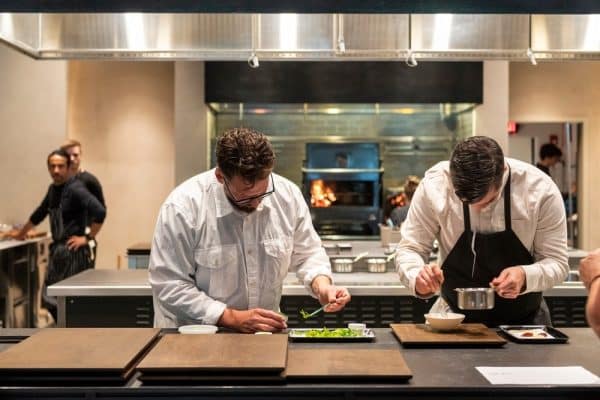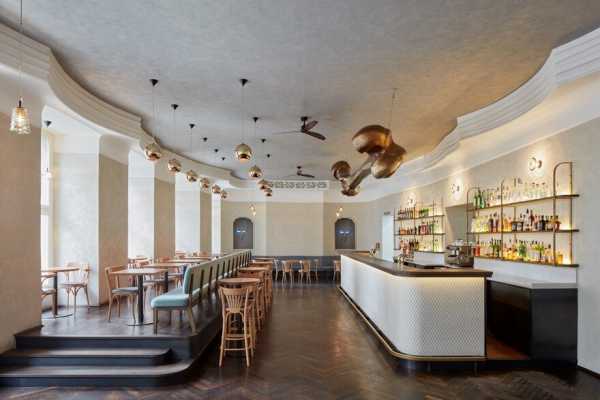Project: HIBA Restaurant
Architects: Pitsou Kedem Architects
Lead Architect: Avital Shenhav-Shani
Lighting design: Orly Avron-Alkabes
Management: Kanor project management
Location: Tel Aviv, Israel
Total floor area: 250 sqm
Photography: Amit Geron
Text by Pitsou Kedem Architects
Hiba (“Halo” in Moroccan) is an intimate restaurant designed for only 40 diners, with no partition between the kitchen and the dining area.
Upon entry, exposure to the restaurant space is done gradually. The visitor enters an arched corridor and walks through it alongside a perforated partition that provides glimpses into the active kitchen. After walking down the hall, the entire restaurant space was exposed.
The inspiration for the partition comes from traditional partitions in the Arab world (“Mashrabiya”) that allow for the partial separation of spaces while maintaining eye contact between them. The partition is made of a rectangular grid, some open and some closed, creating tension between the hidden and the visible. The same element also appears the restaurant’s facade outwards and produces an outward reference of the place. There is an implicit eye contact between the inside and the outside, gentle filtering of light and games of light and shadow in the afternoon.
The materiality is based on natural materials, similar to the local raw ingredients that make up the dishes served on the place and prepared in front of diners in the open kitchen.
Natural oak is used for furniture, partitions and ceilings, and frames the cooking area. Concrete, deeply polished in a way that exposes it’s aggregates, is used for the floor, and concrete powder is used for painting additional soft elements such as a rounded ceiling and a curved bench.
Islands of natural granite stone in a rough cut or deep polishing emerge from the cooking space and are embedded in the space, creating a physical connection between the framed and low kitchen space and the dining hall. The islands used for work later become center tables used for dining and serving.
The bar is unconventional and functions as an “inverted bar” that is integrated with the perimeter carpentry that surrounds the walls of the space. The fixing of the drinks, like all cooking and hosting operations is carried out in front of the diners as the staff moves in space freely between the tables, stone islands, bar and open kitchen, and a closed back kitchen used for preparations.
